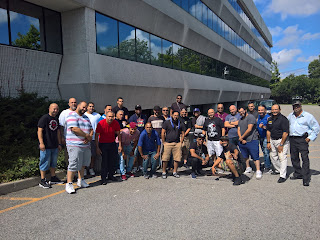 |
| Karen Cummings, MPH, Director of NYSDOH Asbestos Safety Training Program |
- The video-conferencing platform they will use.
- How they will verify the identity of participants.
- How will the instructor check to see if students are paying attention?
- How will the instructor handle students who are distracted or engaging in unrelated activities?
- What type of participation will the instructor require from the students?
- How will the instructor check to see if students return from breaks?
- How will the instructor handle students being late, either at the onset of class or when returning from breaks?
- How will examinations be administered?
- How will DOH-2832 certificates be issued?
- Must be an existing provider with an approved asbestos safety curriculum for the discipline to be taught. Only approved training course material can be utilized during the course. Course material normally distributed in class must be made available to the student either by mail or email prior to the class.
- All requirements for courses remain for notifications, revisions, cancelations, maintaining paperwork, etc.
- The student information memo needs to be provided to the student. The student must return the signed document to the provider (via email is acceptable).
- Rosters shall be submitted with students’ names and DMV numbers, along with proof of attendance and identity, and the signed student information memo for each student listed on the roster.
- All participants must have a good internet connection.
- Each student must sign in to the teleconferencing platform individually. Multiple students cannot share a sign-on.
- All students and the instructor must have video capability. The student must remain visible to the camera during all instruction.
- The entire training session must be recorded and be made available to the NYSDOH upon request. Students must be made aware they are being recorded.
- The NYSDOH must be given call-in information for the class
- Participants must attend the session in its entirety. They cannot “arrive” into the online session late and they must return from breaks on time. If they arrive to the course late, they cannot be admitted into the course. If they do not arrive back from break on time, they cannot continue the course. No make-up time will be allowed.
- Participants cannot have distractions (people and pets interrupting, television on, excess background noise, etc.).
- During instruction time, students may not engage in any activities unrelated to the class (for example: talk to people who are not in the class, texting, surfing the internet, playing games on phone, etc.).
- Instruction must include interactive participatory training methods. All students must actively participate in classroom discussions. Providing only a lecture is not permitted.
- Font size must be large enough and easily legible.
 |
| Instructor-led Courses are shutdown during the PAUSE |
Future Environment Design's (FEDTC's) Teleconferencing Plan was approved. The week of May 18, 2020, we ran our first virtual instructor-led training courses. We would like to thank all those who attended the training and followed the requirements. The requirements above have been underlined for emphasis. FEDTC is using GoToMeeting as our teleconferencing platform. In using that platform your attendance is digitally entered on the attendance sheet when you sign-in to the platform and we start the recording at the class start time. The class session is recorded with all the attendee's audio and video feeds are on the recording. So individuals must be on camera and signed into the portal once the recording starts (no exceptions!) or they will be locked out of the course, as required by NYSDOH. As you see above, we are not allowed to have make-up time with these classes.
As for the training materials, and the exams, we've been using Administrate as our Learning Management System (LMS) since 2015. Many of you have already been accessing the system for the course manual. Now the exam will be online at that portal, too. Course evaluations are also online at CourseCheck.com and have been online for two-three years now.
Some other points, NYSDOH prohibits training providers from mailing blank DOH2832 forms to students. The NYSDOH student information sheet is your official signature for the attendance sheets and the provider and NYSDOH copies of the DOH2832 forms. Training providers will mail the students the completed student and New York State Department of Labor (NYSDOL) copies of the DOH2832 form. Remember you must sign the NYSDOL copy of the DOH2832 form before sending it with your application, check, and the appendix to the license (child support form).
FEDTC looks forward to being able to provide this service to our clients. Please remember we can only continue to provide this service if everyone complies with the NYSDOH rules. All it could take is one person and NYSDOH may decide to discontinue this teleconferencing plan, at any time.




No comments:
Post a Comment